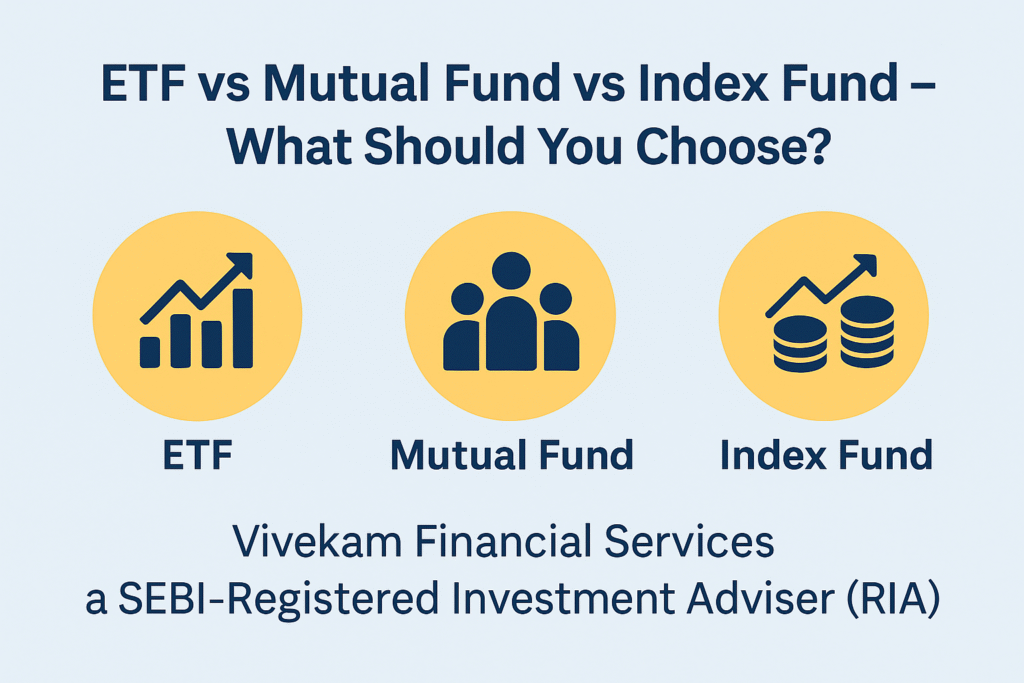The journey to wealth and financial freedom often feels complex, reserved only for those with business degrees. However, the true path is remarkably simple: consistent investing in the stock market.

You don’t need huge sums of money or daily trading expertise. You need a simple, step-by-step plan. This 5-step blueprint is designed to take you from a curious beginner to a confident investor, turning your financial dreams into tangible wealth.
1. Step 1: Secure Your Foundation (The Pre-Game Checklist)
You can’t build a skyscraper on quicksand. Before investing a single dollar, you must ensure your basic finances are stable.

- Slay High-Interest Debt: Prioritize paying off any debt with high interest (like credit cards or personal loans). The guaranteed return from avoiding 20%+ interest is better than any market return you can expect.
- Build Your Safety Net: Create an Emergency Fund covering 3 to 6 months of living expenses. Keep this money safe and liquid (easy to access) in a high-yield savings account. This fund prevents you from selling investments at a loss when life throws a surprise expense your way.
- Define Your “Why”: Set a clear, long-term financial goal (e.g., retirement in 25 years, college fund in 15 years). Your timeline determines the level of risk you should take.
2. Step 2: Open Your Investment Gateway
To participate in the stock market, you need a trading platform. This is often called a brokerage or Demat account (in India).
- Choose the Right Broker: Look for platforms that offer zero commission fees on trades for stocks and ETFs. Accessibility, security, and a user-friendly app interface are also key.
- Fund the Account: Start small. The myth that you need thousands to begin is false. Many platforms allow you to start with very small amounts. The most important thing is simply to start.
- Understand the Account Type: For most beginners, a standard Taxable Brokerage Account (or a retirement account like an IRA/401k if available in your region) is the place to be.
3. Step 3: Choose Your Low-Risk, High-Reward Vehicle
As a beginner, trying to pick individual winning stocks (like Apple, Amazon, or Reliance) is incredibly risky and time-consuming. The smart move is to buy the entire market.

- Embrace Index Funds and ETFs: These are funds that automatically hold a tiny piece of hundreds of companies within a major market index (e.g., the S&P 500 or Nifty 50).
- The Benefit of Diversification: If one company fails, it only minimally impacts your total investment. You gain instant diversification across the entire economy.
- The Proof: Historically, these broad market index funds have always recovered from every downturn and have delivered excellent long-term returns.
- Action: Your first purchase should be a low-cost, broad-market Index Fund or ETF.
4. Step 4: Automate Your Success with DCA

Consistency trumps trying to time the market. The most powerful strategy is Dollar-Cost Averaging (DCA), known as Systematic Investment Plan (SIP) in many countries.
- The DCA Process: You commit to investing a fixed amount (say, $200 or ₹10,000) on a set date every month, regardless of whether the market is up or down.
- The Emotional Shield: This strategy removes your emotions from investing. When the market is low, your fixed contribution buys more shares; when it’s high, it buys fewer shares. Over time, your average purchase price is stabilized.
- The Golden Rule: Treat your investment like a non-negotiable bill. Set up an automatic transfer from your checking account to your brokerage account right after payday. Pay yourself first!
5. Step 5: Master the Art of Patience (The Compounding Effect)
The final, and perhaps hardest, step is waiting. Financial freedom is not a race; it’s a marathon powered by compounding.

- Understand Compounding: Compounding is when your investment earns returns, and then those returns start earning returns too. It’s like a financial snowball that grows bigger and faster the longer it rolls.
- Ignore the Noise: Financial news thrives on fear and panic. Do not check your portfolio every day. If the market drops 10%, that’s not a disaster—it’s a sale on your investments.
- Stay Invested: Your goal is time in the market, not timing the market. Stick to your 5-step plan for decades, and let the relentless power of compounding do the heavy lifting to turn your dreams into wealth.
Detailed 5-Step Investment Action Plan
This table provides a comprehensive overview, including the essential Why and the critical How-To for achieving financial independence through the stock market.
| Step | Action Item | The Why (Rationale) | Best Practices & Mistakes to Avoid |
| 1. | Secure Your Financial Base | Prevents you from being forced to sell low during a crisis. High-interest debt cancels out investment returns. | Best Practice: Automate debt payments. Aim for a 6-month Emergency Fund. Avoid: Investing any money you might need within the next 5 years. |
| 2. | Open a Brokerage Account | This is your legal and secure access point to buy stocks and funds. | Best Practice: Choose a platform with zero commission fees on ETFs/stocks. Avoid: Using platforms that encourage frequent, high-risk day trading. |
| 3. | Select Low-Cost Index Funds | Provides instant diversification, spreading risk across hundreds of companies. It’s the most reliable path to long-term returns. | Best Practice: Stick to broad market trackers (e.g., S&P 500, Nifty 50). Avoid: Wasting time trying to pick individual “hot” stocks as a beginner. |
| 4. | Implement Dollar-Cost Averaging (DCA) | Removes emotion (fear and greed) from the process. You buy more when prices are low, lowering your average cost. | Best Practice: Set up a Systematic Investment Plan (SIP) immediately after payday. Avoid: Waiting for the market to “crash” before you invest (trying to time the market). |
| 5. | Master Patience and Compounding | Time in the market is the key. The exponential power of compounding only works effectively over long periods (10+ years). | Best Practice: Check your portfolio only quarterly or annually. Avoid: Panic-selling during market corrections or obsessively checking stock prices daily. |
#InvestingForBeginners #StockMarketTips #FinancialFreedom #SmartInvesting #WealthBuilding #InvestSmart #MoneyMindset #PassiveIncome #InvestmentGoals #LearnToInvest #PersonalFinance #Carrerbook#Anslation#StockMarketGuide #GrowYourWealth #FinanceEducation #StartInvestingToday

